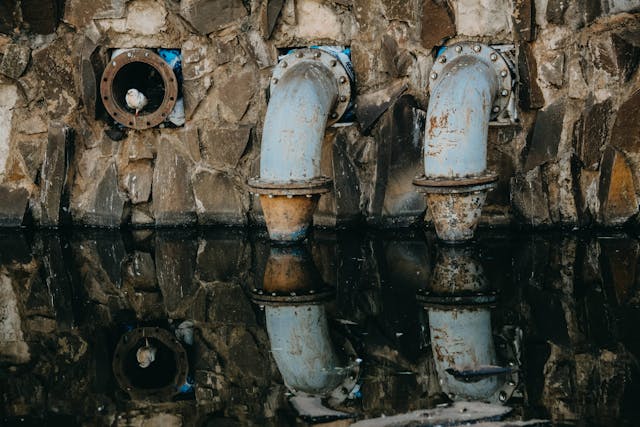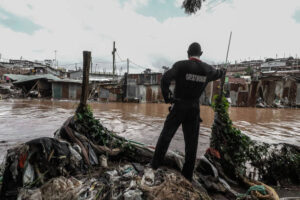
Drainage systems
Flooding has become an all-too-common occurrence in Kenya, with devastating impacts on communities, property, and lives. The failure to create proper drainage systems significantly contributes to this crisis.
Drainage systems are essential infrastructures designed to manage excess water, preventing flooding and promoting water quality. In urban areas, where impervious surfaces are prevalent, the lack of adequate drainage exacerbates the risk of floods.
In this blog, we will explore the importance of building effective drainage systems, examine specific instances where the absence of these systems has caused catastrophic outcomes, and discuss how communities can implement better runoff and drainage solutions in gardens and agricultural areas.
Understanding Drainage Systems and Their Importance
At its core, drainage refers to the process of removing excess water from an area. This can involve various methods and structures, commonly referred to as drainage systems.
Proper drainage systems manage water effectively by channeling it away from populated areas, thereby reducing the risk of flooding and soil erosion.
In cities and towns, the significance of well-designed drainage systems cannot be overstated. Urbanization increases impermeable surfaces such as roads and buildings, that hinder natural water absorption. When rain falls, water accumulates rapidly, leading to these systems becoming overwhelmed.
Effective systems mitigate these risks by ensuring that excess water is transported away quickly, protecting homes, businesses, and infrastructure.

Instances of Flooding Due to Poor Drainage in 2024
In 2024, several catastrophic flooding events highlighted the dire need for improved drainage in Kenya:
- Nairobi’s Delayed Response: In April 2024, heavy rains caused widespread flooding in Nairobi. The city’s drainage which was plagued by blockages and poor maintenance failed to cope with the sudden influx of water. As a result, neighborhoods like Mathare experienced severe flooding, leading to property damage worth millions and tragically claiming three lives.
- Mombasa’s Coastal Crisis: In June 2024, Mombasa faced an unprecedented downpour that overwhelmed its insufficient drainage systems.. Floodwaters submerged homes and businesses, displacing thousands. The economic toll was staggering as local markets faced immense losses. This disaster underscored the critical need for proper drainage infrastructure in coastal cities.
- Kisumu’s Rainfall Catastrophe: During a series of storms in August 2024, Kisumu’s outdated drainage failed once again. As the rains intensified, many areas became impassable rivers, resulting in damage to roads and homes. Local hospitals reported increased cases of waterborne diseases, further illustrating the severe consequences of ineffective drainage solutions.
How to Create Effective Runoffs and Drains in Gardens
Communities can take charge of improving drainage on a smaller scale, particularly in gardens or shambas (farms). Here are some practical methods to enhance water management:
- Construct Swales: Swales are shallow ditches designed to direct water runoff. By strategically placing swales in your garden, you can channel excess water to areas where it can be absorbed, preventing waterlogging.
- Implement Rain Gardens: These are specialized gardens designed to absorb rainwater. By selecting native plants and positioning them in a basin, you can create a natural drain that helps manage runoff effectively.
- Use Permeable Materials: When paving pathways or driveways, consider using permeable materials that allow water to filter through. This can significantly reduce surface runoff and help maintain soil moisture.

The Dangers of Dumping Trash in Drainage Systems/Tunnels
One of the most pressing issues in urban drainage systems is the rampant dumping of trash, including medical and industrial waste, in drainage tunnels. In 2024, several reports highlighted the dire consequences of this behavior:
- Health Hazards: Blocked drains can lead to stagnant water, creating breeding grounds for mosquitoes and other pests, which pose serious health risks. Communities may experience outbreaks of diseases such as malaria and cholera due to compromised drainage systems.
- Environmental Impact: When drainage systems are clogged with waste, runoff can carry pollutants into local water bodies. This contamination not only harms aquatic life but also poses risks to human health, particularly in communities that rely on these water sources.
- Infrastructure Damage: The buildup of trash can cause significant damage to drainage pipes and systems. Repairs are costly and can take years to implement, leaving communities vulnerable to flooding in the interim.
Additional Flood Mitigation Features: Gibbons
In addition to effective drainage, implementing features like gibbons can enhance flood mitigation efforts. Gibbons are structures designed to direct and manage water flow, often used in conjunction with drainage systems. By creating a controlled environment for runoff, gibbons can help minimize flooding and protect vital infrastructure.
Key Benefits of Gibbons:
- Water Management: Gibbons help regulate the speed and volume of water flow, reducing the risk of overwhelming existing drainage systems.
- Erosion Control: These structures help stabilize soil, minimizing erosion in vulnerable areas.
- Improved Water Quality: By managing runoff, gibbons reduce the likelihood of contaminants entering local water sources, supporting healthier ecosystems.
The Way Forward: Investing in Drainage Systems
To address the flooding crisis in Kenya, substantial investment in drainage systems is crucial. Here are some strategic steps that can be taken:
- Government Initiatives: Local and national governments must prioritize drainage system upgrades and maintenance. This includes regular inspections, repairs, and investment in modern drainage technologies.
- Community Engagement: Educating communities about the importance of proper waste disposal and maintenance of drainage systems can foster a sense of ownership. Community-led clean-up efforts can significantly reduce waste in drainage channels.
- Innovative Solutions: Embracing new technologies and methods for drainage, such as bio-swales and green roofs, can improve water management in urban areas.
A Call to Action
The urgency for effective drainage systems in Kenya has never been more apparent. As communities face the realities of climate change and urbanization, the need for robust and well-maintained drainage infrastructure is critical. By investing in and prioritizing drainage, we can protect lives, property, and the environment.
In stark contrast to Kenya’s challenges, the Haarlemmermeer Polder in the Netherlands stands out as a beacon of effective drainage management. This remarkable project showcases the best drainage systems in the world, successfully managing water levels and preventing flooding. It operates through a combination of advanced technologies, constant monitoring, and community involvement, proving that with the right approach, effective drainage systems can lead to resilient, flood-proof communities.





